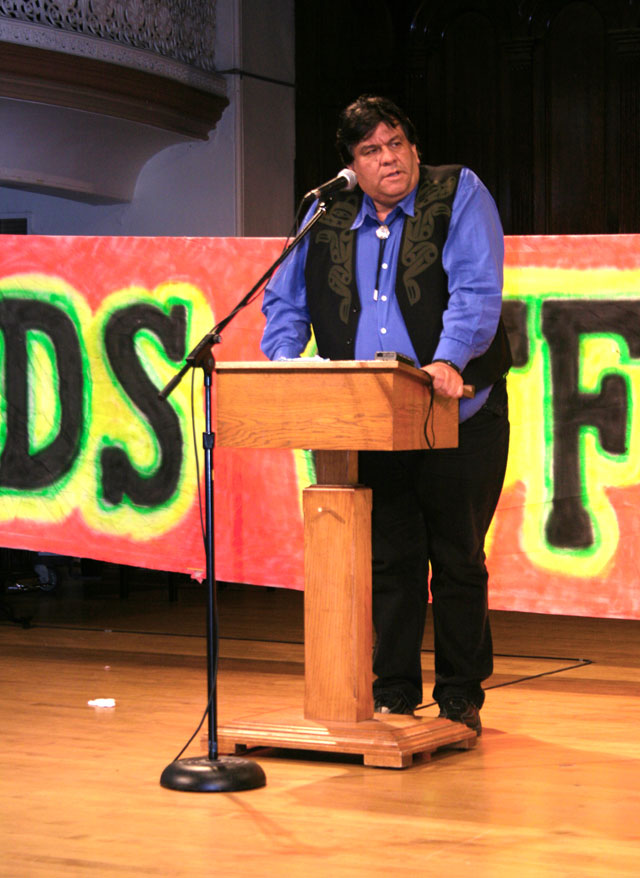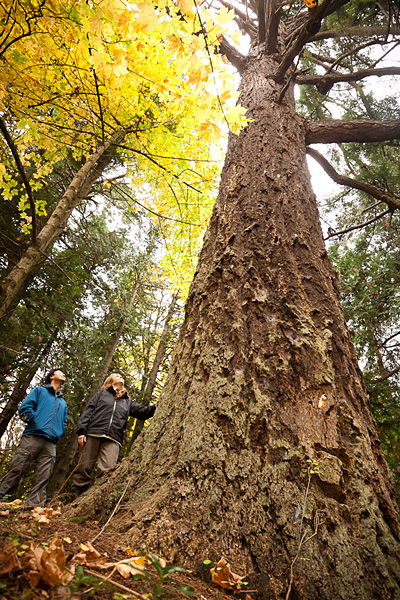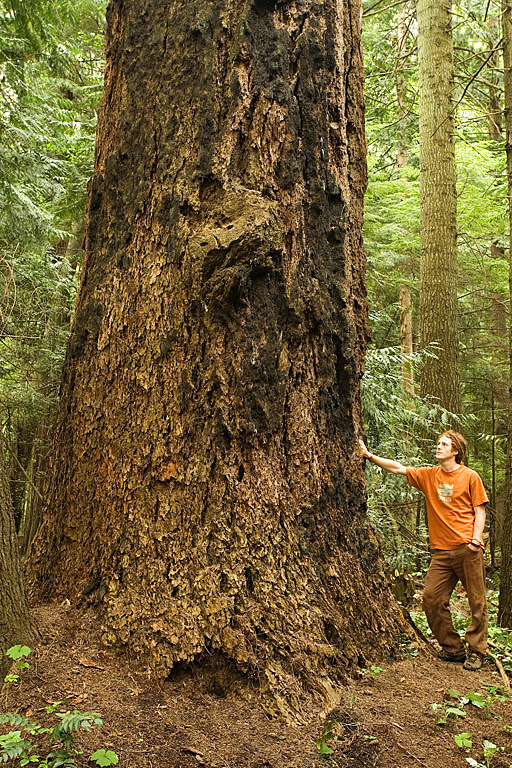
Ancient Forest Alliance hosts rally to protect old growth
Representatives from First Nations bands, forestry workers from the Pulp, Paper, and Woodworkers of Canada Union (PPWC), the Sierra Club, and the NDP’s forestry critic, Norm MacDonald, all spoke on the topics of old growth and forestry jobs.
Public Hike to the Avatar Grove – Saturday, Nov.5th.
Join the Ancient Forest Alliance's Ken Wu and TJ Watt for a hike to the Avatar Grove this coming Saturday.
*** Note - New meeting place for the fall/winter hikes!***

1 & 1/2 Annual Tree Huggers Ball – Dance Party Extravaganza!
Date: Friday, Nov. 4th
Time: 8:00 pm - 1:00 am
Location: Felicita's Pub @ UVic
Tickets: $10 - Available in the UVSS booth in the Student Union Building (SUB) and at the door.
An awesome night full of groovy MUSIC, ridiculous contests, PRIZES, and foot stomping good times

Conservationists fearful of DND land sale
DND, which controls more than 4,000 hectares of land around Greater Victoria, is looking at selling surplus land. The Ancient Forest Alliance has called on the federal government to create protected areas or turn parcels over to agencies which can protect ecosystems.

CTV News – Endangered DND Lands Need Protection
Ancient Forest Alliance worries about potential sell-off of unused DND lands for real estate development and calls for federal government to let Canadian Wildlife Service, Parks Canada, the provinces, regional districts, and First Nations protect unused DND lands.

Human rights groups and Indigenous peoples’ organizations will closely monitor landmark international hearing into Canadian land rights case
On Friday, October 28, the Human Rights Commission of the Organization of American States (OAS) will hold its first ever hearings into the violation of Indigenous land rights in Canada.

Conservationists Call for the Protection of Endangered Ecosystems on Department of National Defence Lands
The potential sell-off of Department of National Defence (DND) lands reported by the Ottawa Citizen and the Canadian media recently is causing concern for conservationists who fear some of Canada’s most endangered ecosystems could be jeopardized by real estate development.

Conservationists call for the Protection of Endangered Ecosystems on Department of National Defence (DND) Lands
Ancient Forest Alliance worries about potential sell-off of unused DND lands for real estate development and calls for federal government to let Canadian Wildlife Service, Parks Canada, the provinces, regional districts, and First Nations protect unused DND lands.

Ancient forests in B.C. – Canadian Geographic Blog
On the southwest coast of Vancouver Island, just 15 minutes north of the historic logging town of Port Renfrew, an ancient old-growth forest named Avatar Grove gives visitors a glimpse of how the island’s trees may have looked 1,000 years ago.
Big trees boost tourism in West Coast town
Pink ribbons knotted to tree branches at the side of a gravel logging road mark the entry to an amazing earthly experience, something so different from anything most people have experienced it might be on another world.
